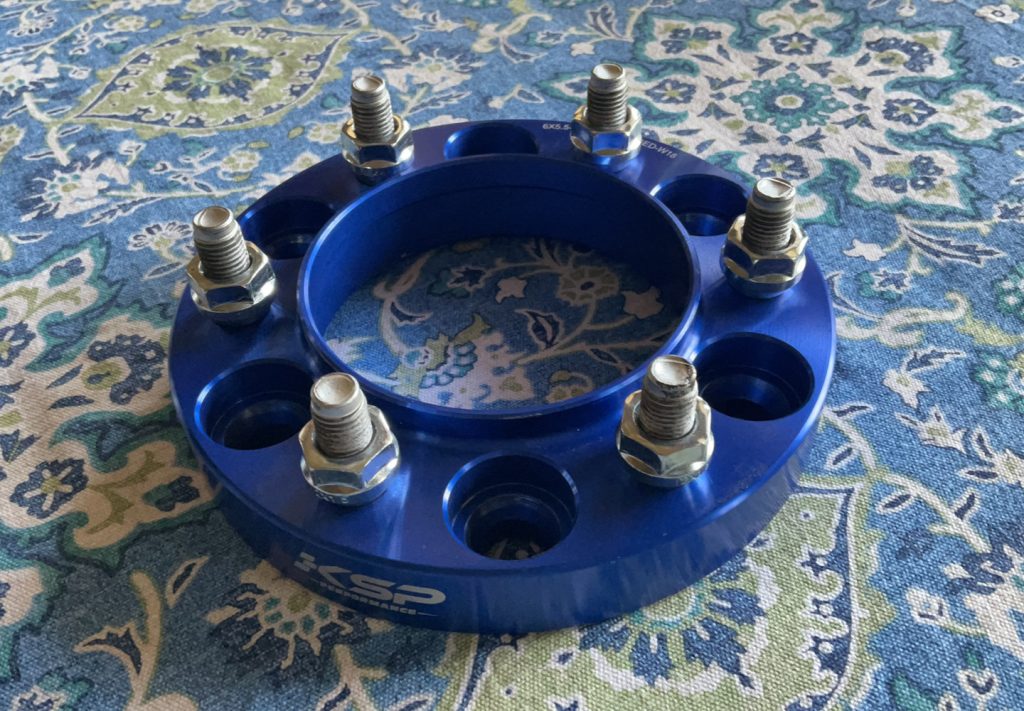
Wheel Spacers: Enhancing Performance and Style
Wheel spacers, often overlooked in the world of automotive modifications, can make a significant difference in your vehicle’s performance and appearance. Whether you’re a car enthusiast looking to fine-tune your ride or someone seeking enhanced stability and style, understanding them is crucial. In this article, we’ll delve into what KSP wheel spacers are, their types, benefits, installation process, and safety considerations.
What are Wheel Spacers?
Wheel spacers are precisely engineered devices that are fitted between the wheel-hub and the wheel itself. They create extra space, pushing the wheel away from the hub. Essentially, they widen the track width of your vehicle.
Importance of Wheel Spacers
Wheel spacers offer several advantages, such as improved vehicle stability, enhanced appearance, and the ability to correct offset issues. These benefits have made them a popular choice among car enthusiasts and everyday drivers alike.

Types of Wheel Spacers
When it comes to wheel spacers, here are two primary types to consider: hub-centric and lug-centric, as well as bolt-on and slip-on spacers.
Hub-Centric vs. Lug-Centric
Hub-centric wheel spacers are designed to fit snugly on the hub, ensuring precise centering. Lug-centric spacers, on the other hand, rely on the lug nuts for centering. Hub-centric spacers are generally recommended for their added stability.
Bolt-On vs. Slip-On
Bolt-on wheel spacers are permanently attached to the hub using extended bolts, while slip-on spacers simply slide onto the existing studs. The choice between these types depends on your specific needs and preferences.
Benefits of Using Wheel Spacers
Improved Vehicle Stability
One of the primary benefits of them is the enhancement of your vehicle’s stability. By increasing the track width, they reduce body roll during turns, making your ride more secure.
Enhanced Appearance
Wheel spacers can give your truck a more aggressive and sporty look by pushing the wheels outward, filling the wheel wells, and providing a flush appearance.
Correcting Offset Issues
If your wheels have incorrect offsets, wheel spacers can help you achieve the desired fitment, ensuring that your tires and wheels align properly with the fenders.
Installing Larger Brake Kits
Wheel spacers can create additional clearance, allowing you to install larger brake kits for improved stopping power.
How to Choose the Right Wheel Spacers
To get the most out of your wheel spacers, you need to select the right ones for your vehicle. Consider the following factors:
Measuring Your Vehicle’s Bolt Pattern
Start by measuring your vehicle’s bolt pattern to ensure you choose spacers that match. An incorrect bolt pattern can lead to fitment issues.
Determining the Right Thickness
The thickness of the spacers affects the overall track width. Determine how much you want to widen your vehicle’s stance before selecting the appropriate thickness.
Considering Material and Quality
Opt for high-quality materials such as aluminum or steel to ensure durability and safety. Cheap, low-quality spacers can compromise your vehicle’s performance.
Checking Local Regulations
Before installing wheel spacers, check your local regulations. Some places may have restrictions or requirements regarding spacer thickness and usage.
Installing Wheel Spacers
DIY vs. Professional Installation
While some enthusiasts may opt for DIY installation, professional installation is for those who are less experienced or unsure of their mechanical skills.
Step-by-Step Installation Guide
For those tackling the installation themselves, here’s a step-by-step guide to ensure a safe and secure fitment.
- Prepare Your Tools: Gather all necessary tools, including a torque wrench, jack stands, and a vehicle-specific service manual.
- Lift the Vehicle: Safely lift your vehicle off the ground using a jack and secure it with jack stands.
- Remove the Wheels: Take off the wheels and set them aside.
- Clean the Hub: Thoroughly clean the hub to ensure a proper fit for the spacers.
- Install the Spacers: Carefully slide the spacers onto the hub or attach them with extended bolts if using bolt-on spacers.
- Torque the Spacers: Use a torque wrench to tighten the spacers to the manufacturer’s recommended torque specifications.
- Reinstall the Wheels: Put the wheels back on and torque the lug nuts to the appropriate specifications.
- Lower the Vehicle: Gently lower the vehicle to the ground and remove the jack stands.
- Double-Check Torque: After a short drive, recheck the torque on the lug nuts to ensure they’re properly seated.
- Maintaining Wheel Spacers
Regular Inspection
Periodically inspect your wheel spacers for signs of wear, corrosion, or damage. Catching issues early can prevent more significant problems.
Cleaning and Lubrication
Keep your wheel spacers clean and lubricated to prevent corrosion and ensure ease of maintenance.
Signs of Wear and Replacement
If you notice unusual vibrations, noise, or irregular tire wear, have your wheel spacers inspected by a professional. Replacing worn-out spacers is essential for your safety.
Safety Considerations
Potential Risks
While wheel spacers offer numerous benefits, they can also pose risks if not installed or maintained correctly. These risks include wheel wobble, improper fitment, and compromised safety.
Safety Precautions
Follow safety precautions during installation and maintenance. Ensure proper torqueing of spacers, and if in doubt, consult a professional mechanic.
Frequently Asked Questions
FAQ 1: Are wheel spacers safe for all vehicles?
Wheel spacers can be safe for most vehicles when installed correctly and in accordance with manufacturer guidelines. However, it’s essential to consider your vehicle’s specifications and local regulations before installation.
FAQ 2: Can I install wheel spacers myself?
If you have the necessary tools, skills, and confidence in your mechanical abilities, you can install wheel spacers yourself. However, professional installation is recommended for those unsure of the process.
FAQ 3: Do wheel spacers affect my vehicle’s warranty?
Installing wheel spacers can potentially affect your vehicle’s warranty. It’s crucial to consult your vehicle’s manufacturer or dealership for specific information regarding warranty coverage.
FAQ 4: How much do wheel spacers cost?
The cost of wheel spacers varies depending on factors like material, brand, and thickness. On average, a set of high-quality wheel spacers can range from $50 to $200.
FAQ 5: Are wheel spacers legal in all states?
The legality of wheel spacers varies by state and country. Before installing wheel spacers, check with local authorities or consult a professional for compliance with regulations.
Conclucion
Wheel spacers are a versatile and valuable tool for car enthusiasts and everyday drivers alike. By understanding their types, benefits, and installation process, you can improve both the performance and appearance of your vehicle. Remember to prioritize safety, and if in doubt, seek professional assistance. Invest in quality wheel spacers, and enjoy a smoother, more stable ride.



